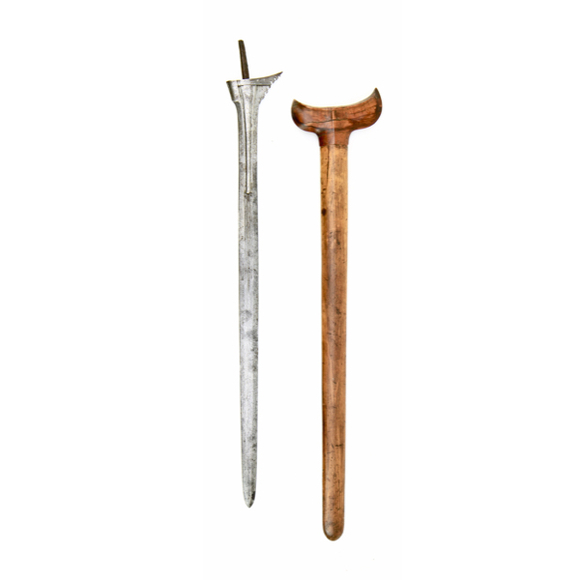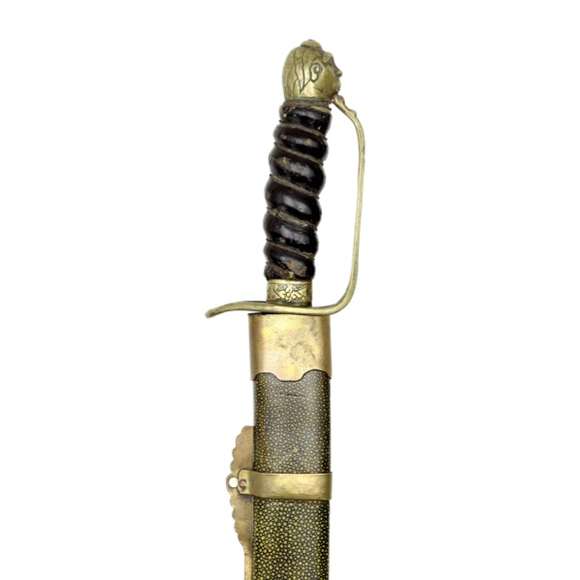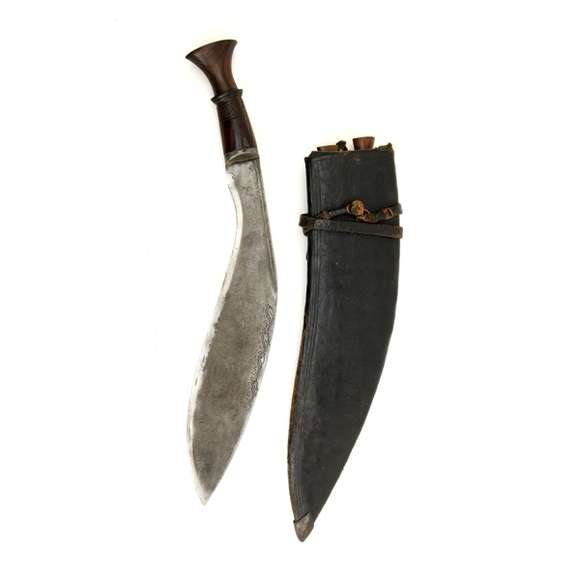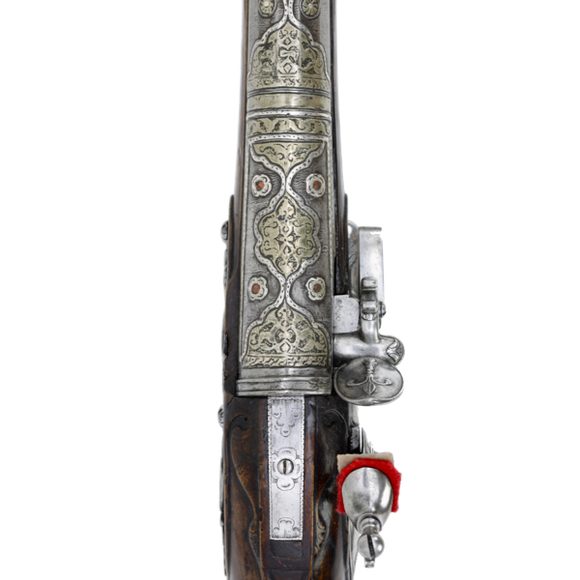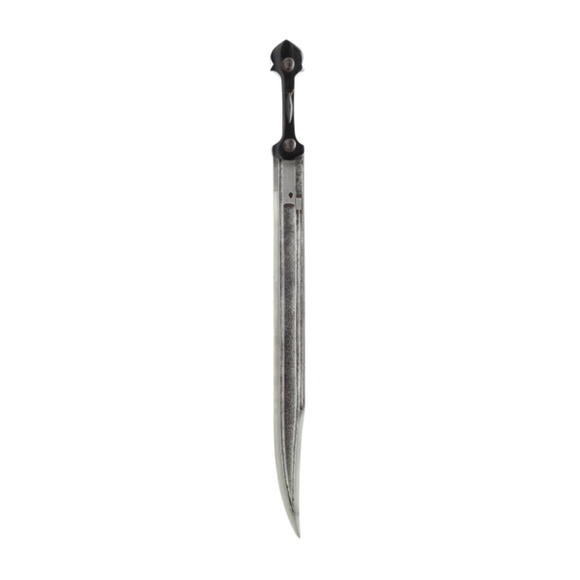Language: English
Source: In common use
Description
Pipe-back sabers have a distinctive spine of round cross-section which runs along the back for most of its length until a raised backedge is formed, and the spine starts to move towards the center of the last double-edged portion of the blade, to terminate at its point.
The idea was a somewhat stiffer saber that was better at the thrust than most sabers tend to be. The idea is credited to John Prosser of London, sword-cutler and belt-maker to the King, who engraved the first pipe-backs with the text "Prosser's invention".1
The pipe-back originated in Great Britain around 1810 and became a standard regulation pattern blade for officers from 1821-1845. Its popularity spread to mainland Europe where it was used by some countries into the early 20th century. 2

Cross-sections of the pipe-back saber.
The saber shown is a French Mameluke pipe-back for the Thai market.
Listed at Mandarin Mansion in 2020.
Notes
1. Such a marking was found among others on a rare East India Company saber sold by Bonhams, 24 Jul 2003, London, lot 125.

